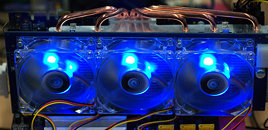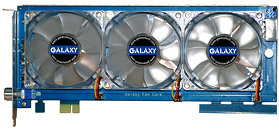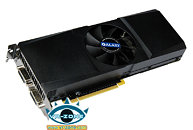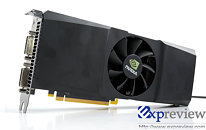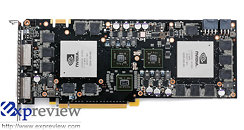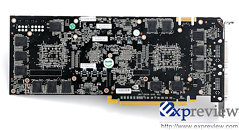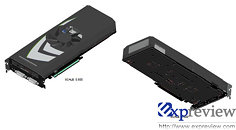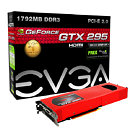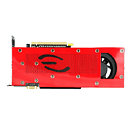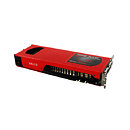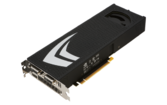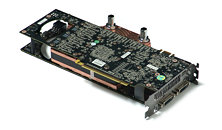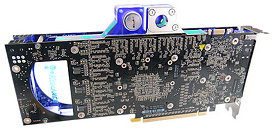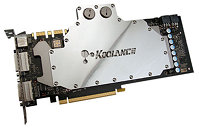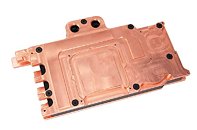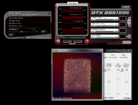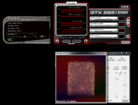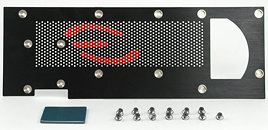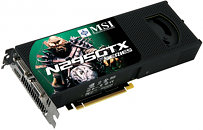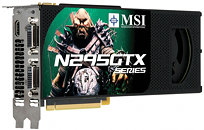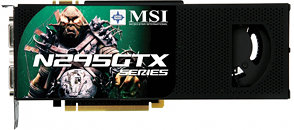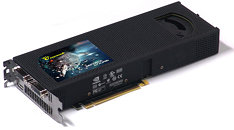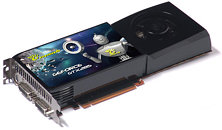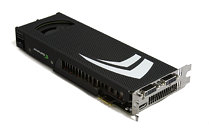Galaxy VGA Fan Card Design Unveiled
Graphics card major and NVIDIA partner Galaxy has come up with a new graphics card cooler design it calls "fan-card". The cooler may feature in some of the high-end graphics accelerators the company is working on. The cooler's design revolves around mounting three powerful fans onto a graphics card without straining its PCB (preventing gradual bending) caused due to the fans' weight and vibration, while also providing greater control.
The card's main heatsink remains fixed on to its PCB, while this card is installed right under it (or over, depending on which way the motherboard is oriented in a case (BTX-style)). The fan card holds three 80 mm LED-lit fans that push greater volumes of air than dual-slot cooling solutions with three fans the company has designed cards with do. The fan-card has openings behind the card that directs its air-flow onto the graphics card's exposed heatsink. The fan-card draws its power from a 4-pin Molex input, and also has a speed controller knob available to the user from the back of the case.
In related news, Galaxy published a picture of its upcoming single-PCB GeForce GTX 295 dual-GPU accelerator, while confirming a few specifications. The card is 267 mm (10.5 inches) long, and features two G200b GPUs with 240 shader processors each. A total of 1792 MB of GDDR3 memory is available. The board TDP is rated at 289W, and carries the reference NVIDIA clock speeds of 576/1242/2016 MHz (core/shader/memory).
The card's main heatsink remains fixed on to its PCB, while this card is installed right under it (or over, depending on which way the motherboard is oriented in a case (BTX-style)). The fan card holds three 80 mm LED-lit fans that push greater volumes of air than dual-slot cooling solutions with three fans the company has designed cards with do. The fan-card has openings behind the card that directs its air-flow onto the graphics card's exposed heatsink. The fan-card draws its power from a 4-pin Molex input, and also has a speed controller knob available to the user from the back of the case.
In related news, Galaxy published a picture of its upcoming single-PCB GeForce GTX 295 dual-GPU accelerator, while confirming a few specifications. The card is 267 mm (10.5 inches) long, and features two G200b GPUs with 240 shader processors each. A total of 1792 MB of GDDR3 memory is available. The board TDP is rated at 289W, and carries the reference NVIDIA clock speeds of 576/1242/2016 MHz (core/shader/memory).
